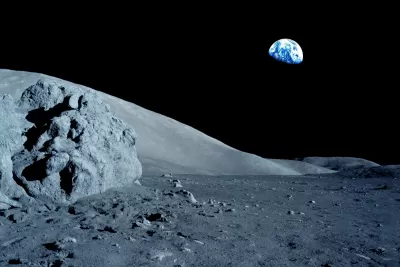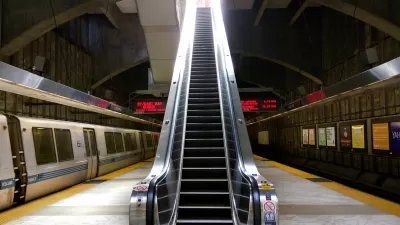Program proponents say this “visionary” endeavor “heralds a new era of human presence and economic activity beyond Earth.”

According to an article from The Economic Times, the U.S. Department of Defense has contracted with defense and aerospace company Northrop Grumman to build a lunar railway in preparation for a permanent human colony on the Moon.
“[T]his visionary endeavor aims to facilitate the seamless transportation of both goods and people across the lunar surface, heralding a new era of human presence and economic activity beyond Earth, as per a report by The Sun,” the article states.
The project, dubbed “Moon Train,” might sound silly, but the lunar surface area is equivalent to the size of Africa, making railway infrastructure critical to transport the materials and equipment needed to explore and colonize the Moon. The contract, part of the 10-year Lunar Architecture (LunA-10) Capability Study, covers research around the basics of developing a lunar rail network, including resources, construction using robots, inspection, maintenance, and repair. The final report is expected this June.
This tangible step toward colonization of space follows hypothetical and occasionally heated debates last year prompted by two books on the topic: City on Mars: Can We Settle Space, Should We Settle Space, and Have We Really Thought This Through? by Kelly Weinersmith and Zach Weinersmith and The First City on Mars: An Urban Planner’s Guide to Settling the Red Planet by Justin Hollander (both mentioned in Planetizen’s Top Planning Books of 2023). While many people are fascinated and excited by the idea of building cities from scratch on new planetary bodies, others say our attention and resources should be focused on solving problems on the planet we currently have.
FULL STORY: Will the US take people to the moon with ‘Moon Train’? Here’s all about the Lunar Transport

Alabama: Trump Terminates Settlements for Black Communities Harmed By Raw Sewage
Trump deemed the landmark civil rights agreement “illegal DEI and environmental justice policy.”

Planetizen Federal Action Tracker
A weekly monitor of how Trump’s orders and actions are impacting planners and planning in America.

Why Should We Subsidize Public Transportation?
Many public transit agencies face financial stress due to rising costs, declining fare revenue, and declining subsidies. Transit advocates must provide a strong business case for increasing public transit funding.

Understanding Road Diets
An explainer from Momentum highlights the advantages of reducing vehicle lanes in favor of more bike, transit, and pedestrian infrastructure.

New California Law Regulates Warehouse Pollution
A new law tightens building and emissions regulations for large distribution warehouses to mitigate air pollution and traffic in surrounding communities.

Phoenix Announces Opening Date for Light Rail Extension
The South Central extension will connect South Phoenix to downtown and other major hubs starting on June 7.
Urban Design for Planners 1: Software Tools
This six-course series explores essential urban design concepts using open source software and equips planners with the tools they need to participate fully in the urban design process.
Planning for Universal Design
Learn the tools for implementing Universal Design in planning regulations.
Caltrans
Smith Gee Studio
Institute for Housing and Urban Development Studies (IHS)
City of Grandview
Harvard GSD Executive Education
Toledo-Lucas County Plan Commissions
Salt Lake City
NYU Wagner Graduate School of Public Service





























